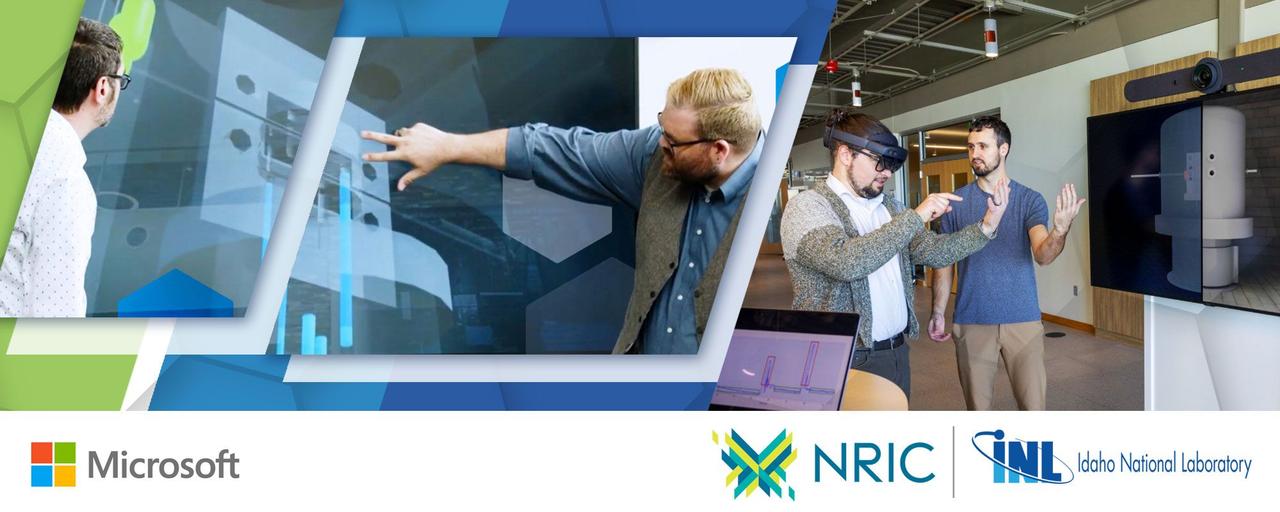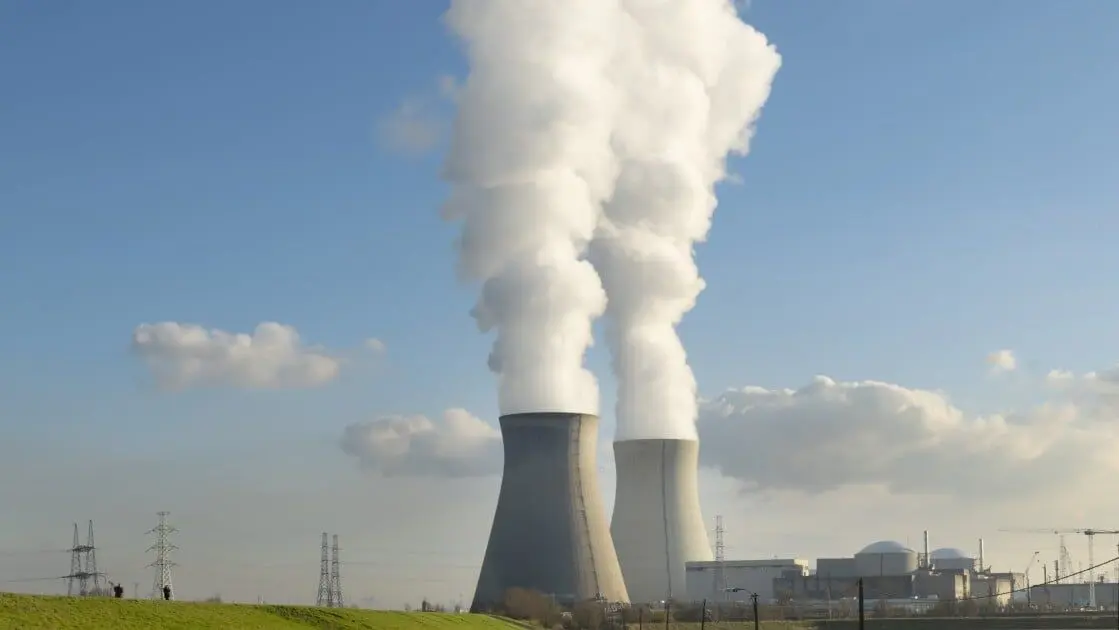Microsoft and Idaho National Laboratory Partner to Accelerate Nuclear Power Licensing with AI
8 Sources
8 Sources
[1]
Microsoft, US national lab tap AI to speed up nuclear power permitting process
SAN FRANCISCO, July 16 (Reuters) - Microsoft and a U.S. national laboratory on Wednesday said they are partnering to examine how artificial intelligence could be used to speed up the process of compiling the documents needed to secure permits for new nuclear power plants. Microsoft (MSFT.O), opens new tab and the Idaho National Laboratory (INL) said they will tap Microsoft's AI technology for generating engineering and safety analysis reports that are a standard part of the application process for construction permits and operating licenses for nuclear facilities in the United States. The AI systems, which have been trained on a huge trove of successful historical applications, will pull data from studies and compile it into complex applications that span hundreds of pages. "It's created for human refinement, so a human can go through each of the sections and, specifically as needed, edit any of the sections, whether manually, or maybe with the help of AI - it's really up to the human," Nelli Babayan, AI director for federal civilian business at Microsoft, told Reuters in an interview. The move comes after President Donald Trump in May signed executive orders to fast-track the licensing process for new nuclear power plants, aiming to shorten what is often a multiyear process into as little as 18 months as AI data centers create soaring demand for energy. The technology could also help with squeezing more energy out of existing nuclear plants, said Scott Ferrara, deputy division director for nuclear safety and regulatory research at INL. Existing nuclear facilities must submit an evaluation of how they might increase power output and apply for an amendment to their operating license. "A plethora of data already exists from about 82 upgrades that have already taken place, and they can just pull right from that (data) and help generate their license amendment request," Ferrara told Reuters in an interview. Reporting by Stephen Nellis in San Francisco; Editing by Leslie Adler Our Standards: The Thomson Reuters Trust Principles., opens new tab
[1]
Microsoft, US national lab tap AI to speed up nuclear power permitting process
SAN FRANCISCO, July 16 (Reuters) - Microsoft and a U.S. national laboratory on Wednesday said they are partnering to examine how artificial intelligence could be used to speed up the process of compiling the documents needed to secure permits for new nuclear power plants. Microsoft (MSFT.O), opens new tab and the Idaho National Laboratory (INL) said they will tap Microsoft's AI technology for generating engineering and safety analysis reports that are a standard part of the application process for construction permits and operating licenses for nuclear facilities in the United States. The AI systems, which have been trained on a huge trove of successful historical applications, will pull data from studies and compile it into complex applications that span hundreds of pages. "It's created for human refinement, so a human can go through each of the sections and, specifically as needed, edit any of the sections, whether manually, or maybe with the help of AI - it's really up to the human," Nelli Babayan, AI director for federal civilian business at Microsoft, told Reuters in an interview. The move comes after President Donald Trump in May signed executive orders to fast-track the licensing process for new nuclear power plants, aiming to shorten what is often a multiyear process into as little as 18 months as AI data centers create soaring demand for energy. The technology could also help with squeezing more energy out of existing nuclear plants, said Scott Ferrara, deputy division director for nuclear safety and regulatory research at INL. Existing nuclear facilities must submit an evaluation of how they might increase power output and apply for an amendment to their operating license. "A plethora of data already exists from about 82 upgrades that have already taken place, and they can just pull right from that (data) and help generate their license amendment request," Ferrara told Reuters in an interview. Reporting by Stephen Nellis in San Francisco; Editing by Leslie Adler Our Standards: The Thomson Reuters Trust Principles., opens new tab
[3]
Microsoft, Google and others seek to flip the nuclear-AI script
Why it matters: Energy demand for data centers is rising fast, and nuclear energy is carbon-free and round-the-clock. * But getting reactors approved and built is really complex and time-sucking. * So hyperscalers, startups and federal agencies want AI to speed things up -- but carefully. Driving the news: This week, the latest efforts emerged around both next-wave reactor designs and incumbent models. * DOE's Idaho National Lab will use a Microsoft tool to create safety and analysis reports that are part of construction and license applications, the parties said Wednesday. * It ingests and analyzes engineering and safety info, and generates documents that the Nuclear Regulatory Commission and DOE require, they said. "This is a big deal for the nuclear licensing process," Jess Gehin, a top INL scientist, said in a statement. * "Introducing AI technologies will enhance efficiency and accelerate the deployment of advanced nuclear technologies." The intrigue: INL and the company are emphasizing that humans aren't taken out of the loop. * Microsoft's Nelli Babayan tells Reuters: "It's created for human refinement, so a human can go through each of the sections and, specifically as needed, edit any of the sections, whether manually, or maybe with the help of AI -- it's really up to the human." State of play: Separately, Westinghouse and Google said Tuesday they're working together to harness AI to make building Westinghouse reactors an "efficient, repeatable process." * They're combining Westinghouse AI tools built on proprietary data with Google's cloud capabilities. * The tools can help deploy the Westinghouse AP1000 -- the same reactor at Plant Vogtle in Georgia, the most recent U.S. project -- as well as its SMR design, or improve existing plants, they said. Catch up quick: Applying AI to nuclear is underway on several fronts. It spans efforts to build new reactors to aiding with regulatory compliance at today's plants. * The NRC is exploring a suite of ways to stitch AI into the fabric of its work. * Startups in the space include Atomic Canyon, which recently raised a $7 million round led by prominent climate VC firm Energy Impact Partners. * Its platform is already being deployed at PG&E's Diablo Canyon plant in California. The bottom line: Look for more tie-ups ahead like the Westinghouse-Google and INL-Microsoft collaborations.
[4]
New AI-nuclear partnership aims to streamline plants' licensing
Why it matters: Navigating the Nuclear Regulatory Commission process is complex and time-consuming, even as U.S. power demand rises and hyperscalers seek new electrons for AI data centers. * The collaboration would expand Atomic Canyon's business, which has focused on helping owners of existing reactors use AI in regulatory compliance. The big picture: The plan is to "use high-performance computing to create high-fidelity simulations that ensure the safety of designs while accelerating licensing with artificial intelligence to automate aspects of the review process," the lab and company said. State of play: Trump 2.0 officials are trying to speed up deployment of new plants of various shapes and sizes, including SMRs and gigawatt-scale units. * One of President Trump's recent nuclear executive orders gives the NRC 18 months to reach final decisions on applications to build and operate new reactors. "The NRC and the industry at large is going to need a lot of help to make it so they can hit those deadlines, and our view is artificial intelligence is going to play a key role in enabling that," Atomic Canyon CEO Trey Lauderdale tells Axios. How it works: Oak Ridge is home to massive computing power deployed to help train Atomic Canyon's AI model that's based on over 50 million pages of highly technical NRC documents. * ORNL director Stephen Streiffer tells Axios that using AI does not replace human beings, who perform final validation. Instead, he says, this use case for AI enables more speed and stronger design safety work. * "Where AI becomes useful is that it's helping the regulator, and it's helping the power plant builder, make sure that there are no gaps in the safety analysis," he said in an interview. Catch up quick: The ORNL-Atomic Canyon collaboration is part of a wider trend of harnessing AI to help with regulations for existing and future nuclear reactors. * DOE's Idaho National Lab will use a Microsoft tool to create safety and analysis reports that are part of construction and license applications, the parties said last week. * Also last week, Westinghouse and Google said they're working together to harness AI to make building Westinghouse reactors an "efficient, repeatable process." The bottom line: "We're trying to get nuclear reactors onto the grid so that we can increase the energy supply and hopefully ultimately decrease the price to consumers in the U.S., where part of that demand itself is driven by AI," Streiffer said.
[5]
Microsoft's newest deal uses AI to untangle nuclear red tape
In a move that could significantly reduce the red tape facing nuclear innovators, the Idaho National Laboratory (INL) and Microsoft have teamed up to bring artificial intelligence to one of the most bureaucratically burdensome corners of clean energy: nuclear licensing. The collaboration, funded by the U.S. Department of Energy's Office of Nuclear Energy through the National Reactor Innovation Center, is focused on modernizing how developers prepare construction permits and operating license applications for nuclear power plants -- an often painstaking and expensive process. "This is a big deal for the nuclear licensing process," Jess Gehin, associate laboratory director for Nuclear Science and Technology at INL said in a release announcing the partnership. "Introducing AI technologies will enhance efficiency and accelerate the deployment of advanced nuclear technologies." Using Microsoft's Azure AI services, INL will deploy a generative artificial intelligence tool designed to help engineers and developers construct the lengthy technical reports required by the U.S. Nuclear Regulatory Commission (NRC) and Department of Energy. These reports typically involve thousands of pages of safety and engineering data, pulled together from disparate sources. The Azure AI-powered solution doesn't make the safety judgments itself, but it automates the report drafting process, giving human reviewers a more efficient starting point. The tool is expected to be particularly valuable for the licensing of advanced reactors, which often differ in design and materials from traditional light water reactors, making standardized documentation more complex. "Artificial intelligence technologies can enable a new frontier of innovation and advancement by automating routine processes," said Heidi Kobylski, vice president for Federal Civilian Agencies at Microsoft. "We are honored to collaborate with INL to help address the complicated process of nuclear licensing." This isn't INL and Microsoft's first joint foray into AI-powered nuclear tech. In 2023, they partnered with Idaho State University students to build a digital twin -- a virtual model -- of ISU's AGN-201 reactor. Now, the partners are hoping this new application of AI could help clear a longstanding obstacle to scaling up clean, nuclear energy -- by streamlining the paperwork required to get new reactors approved and running.
[6]
Idaho National Laboratory Collaborates with Microsoft to Streamline Nuclear Licensing | Newswise
Newswise -- (IDAHO FALLS, Idaho) -- The Idaho National Laboratory (INL) and Microsoft Corporation (Microsoft) have announced a collaboration to use Microsoft's Azure cloud and artificial intelligence (AI) technologies to streamline the nuclear permitting and licensing application process. The U.S. Department of Energy (DOE) Office of Nuclear Energy through the National Reactor Innovation Center provided funding for the project. "This is a big deal for the nuclear licensing process," said Jess Gehin, associate laboratory director for Nuclear Science and Technology at Idaho National Laboratory. "Introducing AI technologies will enhance efficiency and accelerate the deployment of advanced nuclear technologies." INL will leverage a Microsoft-developed solution built with Azure AI services to generate engineering and safety analysis reports, which are standard reports submitted as a part of applications for construction permits and operating licenses for nuclear power plants. For reactor developers, generating these large, detailed reports is typically a time-consuming and expensive process that requires compiling safety data and language from multiple sources. The Azure AI-powered solution will help streamline and accelerate the review process. The technology is designed to ingest and analyze nuclear engineering and safety documents, and generate documentation required by the U.S. Nuclear Regulatory Commission (NRC) and DOE for nuclear licensing. The tool does not perform analyses on the documents but rather automates the process of constructing licensing documents for subsequent human verification. "Artificial intelligence technologies can enable a new frontier of innovation and advancement by automating routine processes, accelerating development and freeing scientists and researchers to focus on the real complex challenges affecting our society," said Heidi Kobylski, vice president for Federal Civilian Agencies, Microsoft. "We are honored to collaborate with INL to help address the complicated process of nuclear licensing to potentially help speed the approval of nuclear reactors necessary to support our increasing energy demands." The tool has wide applicability for nuclear energy-related licensing, including new light water reactors and upgrades to existing light water reactors. The Azure AI-powered solution could be especially useful for licensing advanced reactors, which often have different designs, fuels, coolants and materials than the conventional reactors typically reviewed by the NRC. The technology can generate reports for any nuclear facility licensed through NRC or DOE authorization, including nuclear energy test facilities. "AI holds significant potential to accelerate the process to design, license, and deploy new nuclear energy for the nation's increasing energy needs," said Chris Ritter, division director of Scientific Computing and AI at INL. "INL looks forward to early research to evaluate the applicability of generative AI in the nuclear licensing space." The latest AI tool is not the first collaboration between INL and Microsoft. In 2023, INL and Idaho State University (ISU) nuclear engineering students developed the world's first nuclear reactor digital twin -- a virtual replica of ISU's AGN-201 reactor -- using the company's Azure cloud computing platform.
[7]
Oak Ridge National Laboratory, Atomic Canyon to accelerate nuclear licensing with AI
Newswise -- The Department of Energy's Oak Ridge National Laboratory and artificial intelligence company Atomic Canyon signed a memorandum of understanding to streamline the licensing process for nuclear power plants with artificial intelligence for license application reviews. The agreement, signed during the Nuclear Opportunities Workshop (NOW) held at the Knoxville Convention Center, outlines their shared intentions to use high-performance computing to create high-fidelity simulations that ensure the safety of designs while accelerating licensing with artificial intelligence to automate aspects of the review process. The United States has established ambitious new deadlines for licensing reactor designs and commissioning new nuclear power plants. Meeting these targets requires public-private partnerships with leading companies innovating in both energy and AI to deliver the solutions the nation needs. "ORNL was critical to the development of nuclear energy more than 75 years ago, and we are committed to advancing the technologies needed to sustain and grow the nation's nuclear capacity today," said ORNL Director Stephen Streiffer. "The time is now. With new capabilities enabled by AI and partners like Atomic Canyon, we can help the nuclear industry unleash American energy." With a legacy rooted in the Manhattan Project, ORNL is home to DOE Office of Science user facilities including the High Flux Isotope Reactor and the Oak Ridge Leadership Computing Facility, which houses the Frontier supercomputer; and other world-leading facilities for applied energy sciences. This combination enables companies like Atomic Canyon to access cutting-edge tools for simulation, digital qualification, materials development and component testing. "We're entering into a new, radically more advanced era of nuclear power, and the demand for steady-state energy consumption is growing rapidly," said Tom Evans, ORNL's lead scientist on the project. "Agreements like this are exactly how we can meet those demands through innovative approaches that accelerate the process by which nuclear power is brought to the grid." Using ORNL's Frontier, the world's first exascale supercomputer, Atomic Canyon developed novel AI models designed specifically for the nuclear industry called FERMI, which powers Atomic Canyon's Neutron AI platform. FERMI models enable intelligent search capabilities, allowing users to quickly locate relevant documents across vast repositories of technical documentation. Overseen by the U.S. Nuclear Regulatory Commission, the nuclear industry is highly regulated to ensure the safety and reliability of every nuclear reactor in the country. NRC's oversight - including licensing new reactors - often requires tremendous amounts of research and reporting. AI has the potential to save the industry vast amounts of time and labor by streamlining reporting requirements and accelerating licensing and regulatory compliance processes. The computing power of Frontier was necessary to teach FERMI models the technical language of the nuclear industry based on the vocabulary used in the more than 53 million pages of nuclear documents contained within the NRC's ADAMS database, the NRC's official record-keeping system that documents the history of every reactor in the country. Atomic Canyon's Neutron AI Platform not only allows users to find information faster and more efficiently, but it also provides clear and meaningful context to complex information, making it easier for nuclear power professionals to understand and develop problem-solving solutions. "Our mission at Atomic Canyon is to build the most advanced generative AI platform for the nuclear industry," said Atomic Canyon CEO Trey Lauderdale. "ORNL's expertise in nuclear science and high-performance computing was critical for us to be able to build AI in a reliable format. We want to double-down on that relationship to build AI that can be used to help every reactor in America's nuclear fleet." The agreement also allows Atomic Canyon to further develop Neutron Enterprise - a proprietary version of their Neutron AI platform, but with exclusive capabilities and enhanced cybersecurity features to protect sensitive nuclear information. UT-Battelle manages ORNL for the Department of Energy's Office of Science, the single largest supporter of basic research in the physical sciences in the United States. The Office of Science is working to address some of the most pressing challenges of our time. For more information, visit energy.gov/science. - Jeremy Rumsey
[8]
Microsoft, US national lab tap AI to speed up nuclear power permitting process
SAN FRANCISCO (Reuters) -Microsoft and a U.S. national laboratory on Wednesday said they are partnering to examine how artificial intelligence could be used to speed up the process of compiling the documents needed to secure permits for new nuclear power plants. Microsoft and the Idaho National Laboratory (INL) said they will tap Microsoft's AI technology for generating engineering and safety analysis reports that are a standard part of the application process for construction permits and operating licenses for nuclear facilities in the United States. The AI systems, which have been trained on a huge trove of successful historical applications, will pull data from studies and compile it into complex applications that span hundreds of pages. "It's created for human refinement, so a human can go through each of the sections and, specifically as needed, edit any of the sections, whether manually, or maybe with the help of AI - it's really up to the human," Nelli Babayan, AI director for federal civilian business at Microsoft, told Reuters in an interview. The move comes after President Donald Trump in May signed executive orders to fast-track the licensing process for new nuclear power plants, aiming to shorten what is often a multiyear process into as little as 18 months as AI data centers create soaring demand for energy. The technology could also help with squeezing more energy out of existing nuclear plants, said Scott Ferrara, deputy division director for nuclear safety and regulatory research at INL. Existing nuclear facilities must submit an evaluation of how they might increase power output and apply for an amendment to their operating license. "A plethora of data already exists from about 82 upgrades that have already taken place, and they can just pull right from that (data) and help generate their license amendment request," Ferrara told Reuters in an interview. (Reporting by Stephen Nellis in San Francisco; Editing by Leslie Adler)
Share
Share
Copy Link
Microsoft and the Idaho National Laboratory are collaborating to use AI in streamlining the complex process of securing permits for new nuclear power plants, potentially reducing the time and effort required for licensing applications.
Microsoft and Idaho National Laboratory Join Forces
Microsoft and the Idaho National Laboratory (INL) have announced a groundbreaking partnership to leverage artificial intelligence in streamlining the complex process of securing permits for new nuclear power plants. This collaboration aims to significantly reduce the time and effort required for licensing applications, potentially accelerating the deployment of nuclear energy
1
.
Source: Reuters
AI-Powered Document Generation
The partnership will utilize Microsoft's AI technology to generate engineering and safety analysis reports, which are crucial components of the application process for construction permits and operating licenses for nuclear facilities in the United States. These AI systems, trained on a vast repository of successful historical applications, will compile data from various studies into comprehensive applications that can span hundreds of pages
1
.Human Oversight and Refinement
Nelli Babayan, AI director for federal civilian business at Microsoft, emphasized that the AI-generated content is designed for human refinement. Experts will review and edit each section as needed, ensuring accuracy and compliance with regulatory standards
1
.
Source: Newswise
Addressing Growing Energy Demands
This initiative comes in response to the increasing energy demands, particularly from AI data centers. The collaboration aims to shorten the typically multi-year licensing process to as little as 18 months, aligning with recent executive orders signed by President Donald Trump to fast-track the licensing process for new nuclear power plants
1
.Enhancing Existing Nuclear Facilities
The technology also has potential applications for existing nuclear plants. Scott Ferrara, deputy division director for nuclear safety and regulatory research at INL, noted that the AI system could assist in generating license amendment requests for power output increases, leveraging data from approximately 82 previous upgrades
1
.Related Stories
Industry-Wide AI Adoption
This partnership is part of a broader trend in the nuclear industry to harness AI for regulatory compliance and efficiency improvements. Other notable collaborations include Westinghouse and Google's joint effort to make building Westinghouse reactors more efficient and repeatable
3
.Implications for Nuclear Energy Deployment

Source: Axios
The use of AI in nuclear licensing is expected to have far-reaching implications for the industry. Jess Gehin, a top INL scientist, described it as "a big deal for the nuclear licensing process," emphasizing that AI technologies will enhance efficiency and accelerate the deployment of advanced nuclear technologies
5
.Future Prospects
As the demand for clean, round-the-clock energy sources grows, particularly driven by AI data centers, this collaboration between Microsoft and INL could play a crucial role in expanding nuclear energy capacity. The initiative not only aims to streamline the licensing process but also to ensure the safety and reliability of nuclear facilities through advanced AI-powered simulations and analysis
4
.References
Summarized by
Navi
Related Stories
U.S. Energy Secretary Advocates for Nuclear Power to Meet AI's Growing Energy Demands
27 Feb 2025•Technology

Google and Westinghouse Partner to Revolutionize Nuclear Reactor Construction with AI
17 Jul 2025•Technology

Google and Westinghouse Deploy AI to Accelerate Nuclear Reactor Construction
20 Nov 2025•Technology

Recent Highlights
1
Nvidia drops $20 billion on AI chip startup Groq in largest acquisition ever
Business and Economy

2
Meta acquires Manus for $2 billion, adding revenue-generating AI agents to its platforms
Business and Economy

3
China proposes world's strictest AI chatbot rules to prevent suicide and emotional manipulation
Policy and Regulation




